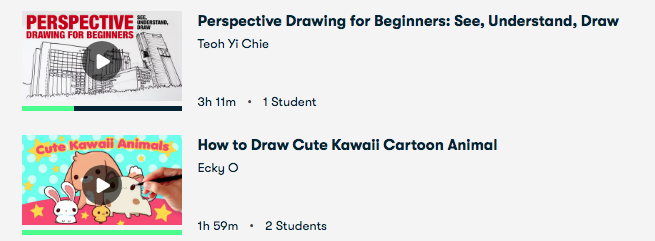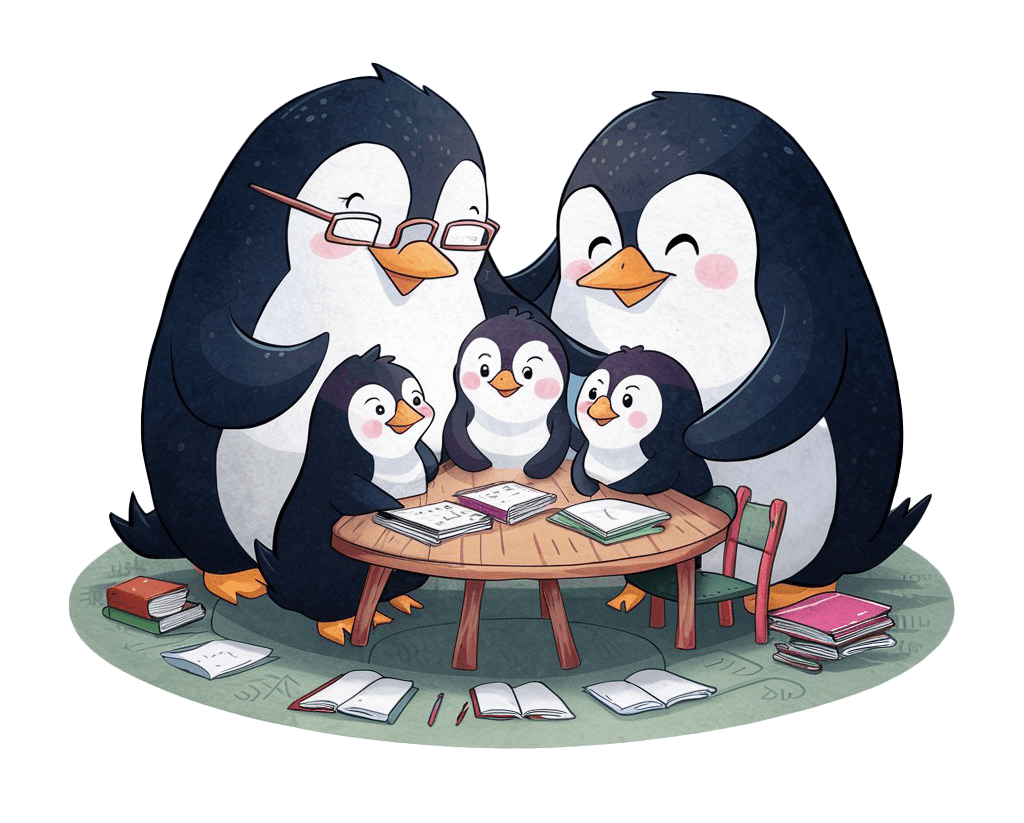Skillshare offers tutor-created courses in animation, creative writing, video, graphic design and illustration, music and photography as well as UX/UI design and Web Development making it a fantastic resource for homeschooling. Using skillshare for homeschool lessons enhances a curriculum, makes learning fun and gives homeschoolers access to hundred of different tutors!
If your homeschoolers enjoy learning independently or choosing courses to study, especially if they’re interested in creative/expressive subjects such as art, music or computing, there is probably a Skillshare course that will be a good match.
A lot of the tutors on Skillshare also have YouTube channels, where they share similar content for free (which is how we found the site in the first place). Skillshare is a better option for home education because homeschoolers can use the site unsupervised, giving them the freedom to explore their interests in a way that online safety concerns don’t allow us to do with YouTube. On Skillshare, they’re able to go through the website browsing courses without us worrying they’ll come across an unsuitable video.
Choosing Courses on Skillshare
Instead of parental controls, we have internet rules for homeschoolers to stick to and for Skillshare, the rule is that they’re not allowed to start a course until we’ve approved it. Whenever they find a course that sounds interesting, they add it to a shared home-ed account, and I approve it later.
We also use Skillshare to assign tutorials for our homeschoolers. Assigning some tutorials and letting them choose others is a simple way to help them understand whether or not the specific lesson needs the home learner to be focused or attentive:
- Focused learning is what’s needed of pupils when they are covering material that is core curriculum-based, or optional subjects that they may be tested on – they must apply the same concentration levels as they would with a teacher in a classroom.
- Attentive learning in this scenario applies to courses that are homeschooler-led not teacher-driven; anything they are trying to learn because the material interests them.
For a home learner that means:
Focused learning = I need to know this so I’ll actively try to learn
Attentive learning = I’d like to know this stuff (but it’s ok if I don’t take it all in now)
I pre-watch courses our home learners add to Skillshare to check the tutoring style/content but they decide for themselves whether a course is one they want to continue with or not.
Sometimes the teaching style isn’t appealing or the content is too hard/easy. As home learners used to online tutorials they’re (mostly) reliably able to gauge whether they’ll benefit from a course or not, and so if it doesn’t feel right to them, there’s no obligation to complete the course.
If they think any course content is too challenging we’ll look at it together and see if either a pre-course lesson to review knowledge/skills will help, or if it genuinely is too hard, we’ll keep it on file for later.
This works well because they are telling me what they want to learn. A large part of home education is helping home learners create an education pathway (a learning path) that will
a) end in the qualifications they need & b) enable them to take the path they choose once they age out of home education.
Giving home learners the freedom to experiment with learning via different teaching styles, and explore different subjects, topics and interests helps young learners become clearer about what they would like their learning path to look like. That in turn gives you (the home educator) the opportunity to figure out how to facilitate that hobby or skill, or facilitate a more in-depth independent study path.
The classes on Skillshare are diverse and the subjects of all courses are either beneficial to homeschoolers by helping improve a skill/increase knowledge, or are courses that help them figure out how they like to express themselves creatively; both equally as important.
Peace of Mind for Home Educators
Skillshare is great for homeschool because of how easy it is to assign and track home-learners’ classes. Homeschoolers can sign up for a course and you (the teacher-parent) can track their progress at a glance

Saved classes can be assigned to individual pupils.
Some of the classes are short and great to use as filler lessons, others are too long to be completed in one session so can be spread out over multiple lessons.
The scope of lessons within subjects makes Skillshare a valuable home-ed subscription.

Technical drawing or cartoon animal? This variety within course categories allows you to push homeschoolers out of their comfort zone, within a framework they’re familiar with.
Because Skillshare is a community learning platform, there are a variety of tutors. If a class is led by a tutor homeschoolers don’t connect with, you can find another. Likewise, if they really enjoy a specific lesson because of the tutor, it makes assigning future lessons easier.
Skillshare has been a particularly useful tool for us when it comes to music theory. Avid guitar players, I wanted to make sure our homeschoolers had the basics of musical theory covered and Skillshare made that really easy.

Lots of tutors include resources to use alongside the courses and projects for students to complete – homework, essentially.
Skillshare allows users to upload completed projects (and earn badges for each one). This for homeschoolers is a brilliant blend of the time flexibility of an online course, with the structure of an in-person tutor. And again, this is a tool that makes it easy for home educators to
a) see how much students are engaging with the classes
b) track how much additional work students complete, aside from watching the tutorials.
Skillshare offers a free trial that could be used during a Home-Ed Study Week to see if your homeschool could benefit from this homeschool subscription. Skillshare costs about £6 a month which, for the number of tutors and classes this gives you access to, is an absolute bargain.

